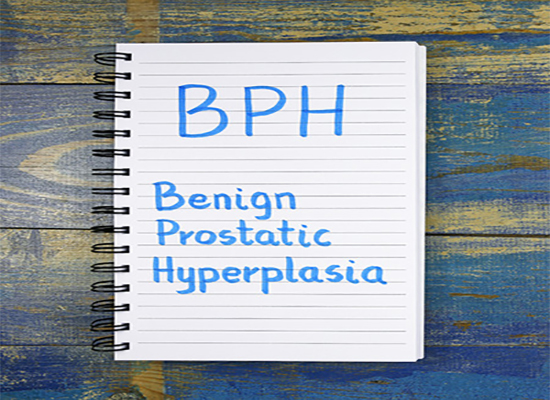Male Supplements
Get Cutting Edge Herbal Supplements for Men
No Subscriptions - No Monthly Billing - Buy What You Need When You Need It!
Activate 15% Discount
BPH - An Enlarged Prostate, Symptoms, Treatment and Prevention
BPH, or Benign Prostatic Hyperplasia, is commonly called "enlarged prostate" for short. BPH affects an estimated 14 million men today.
In this article, learn what you need to know about symptoms, diagnosis, treatment, and possible prevention of BPH.
Symptoms of Benign Prostatic Hyperplasia
The symptoms of BPH can be annoying at the mild end and disruptive to quality of life at the extreme end. Here are the most commonly reported symptoms:
- Nocturia, or frequent need to urinate during the night. - Urinary incontinence. - Inability to urinate (retention) or to sustain a steady stream. - Pain during or after intimacy. - Frequency and urgency of urination. - Dribbling or weak urine stream. - Urine that is odorous or strangely colored.Diagnosis of Benign Prostatic Hyperplasia
Diagnosis of BPH is often prompted by the appearance of symptoms as listed here. Interestingly, the amount of enlargement to the prostate gland does not always positively correlate to the severity of symptoms. In other words, a patient can have a slightly enlarged prostate along with many symptoms or a severely enlarged prostate with few symptoms and any variation thereof along the spectrum.
Typically, a physician will follow three steps to obtain an accurate diagnosis of BPH:- First, a full medical history (personal and family) will be taken. Special attention will be paid to any family members who have also been diagnosed with BPH. - Second, the physician will do a full physical exam, including abdominal palpation, a digital rectal exam to feel for the prostate gland, a urine specimen, and tapping on areas of the body where lymph glands or other areas may be tender or swollen. - Third, the physician typically orders tests, including a prostate antigen blood test (PSA), a urinalysis, a series of urodynamic tests to measure bladder and urethra function, a cystoscopy to look into the bladder and urethra, a transrectal ultrasound to look more closely at the prostate and finally, if needed, a biopsy of the prostate itself.
Treatment of Benign Prostatic Hyperplasia
Once a firm diagnosis of BPH has been obtained, there are a number of treatment options that can be used depending on the severity of the enlargement, the severity of the symptoms, and the results of the diagnostic tests.
- Do Supplements Like Glucosamine and Chondroitin Help Knee Pain and Arthritis?
- Chinese Herbal Supplements Horny Goat Weed Epimedium
- Polyphenols Key to Green Tea's Rich in Antioxidants
- Chondroitin and Glucosamine Osteoarthritis
- Why is my Sexual Desire Decreasing with Age?
- Boost Your Sex Drive with this Invaluable Guide
Click to see more articles from Mark
